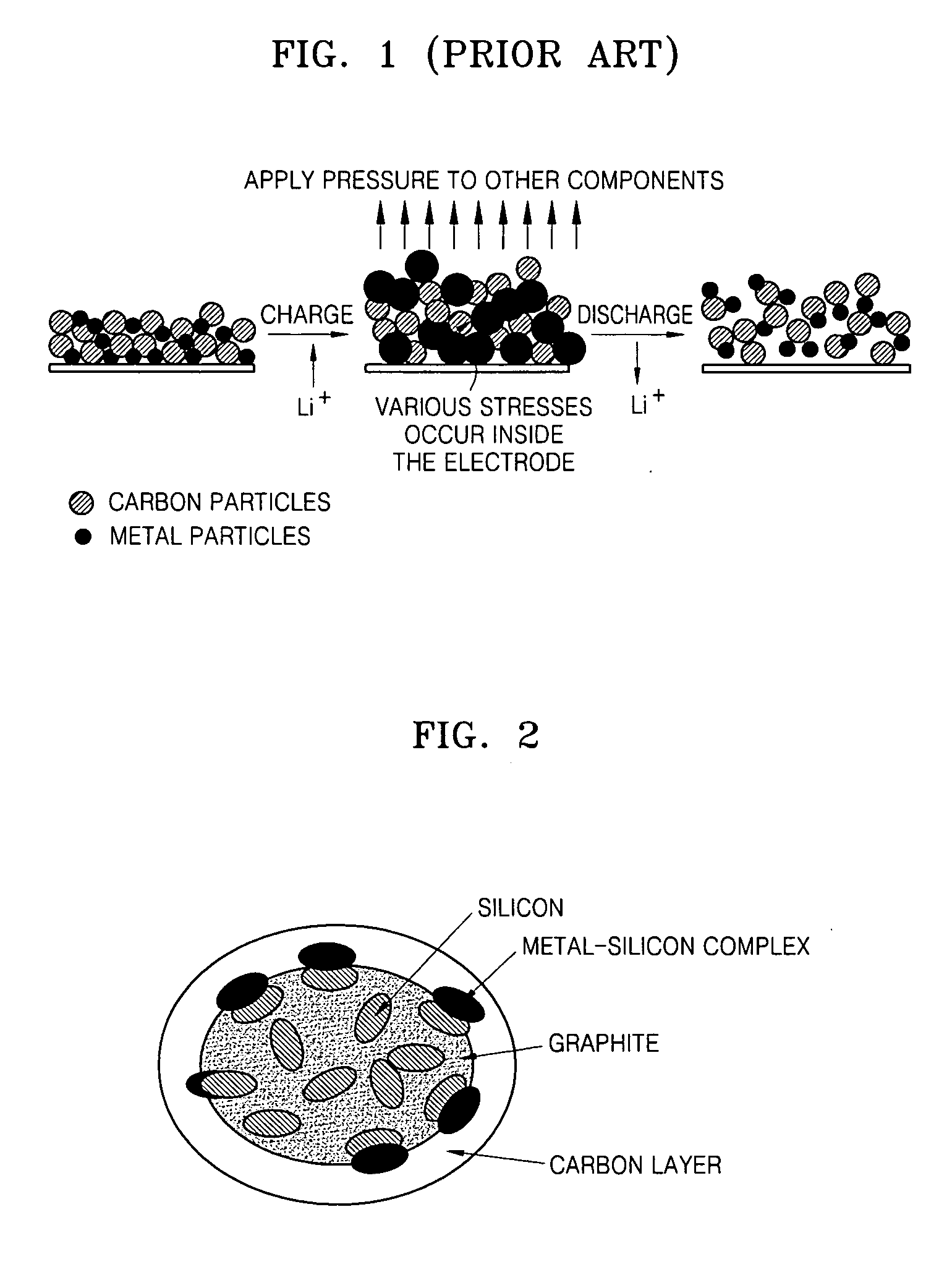Anode active material, method of manufacturing the same, and lithium battery using the same
- Summary
- Abstract
- Description
- Claims
- Application Information
AI Technical Summary
Benefits of technology
Problems solved by technology
Method used
Image
Examples
example 1
[0079] Silicon particles having primary particles with an average diameter of 20 μm and graphite particles having an average particle diameter of 6 μm were mixed in a weight ratio of 1:1. The mixture was milled for 60 minutes by high energy ball milling using a 8000M Mill (SPEX, New Jersey). A powdered nickel stearate was added to the obtained graphite-silicon complex material particles in a molar ratio of 0.2:1 and the result was mixed regularly. The mixture was sintered under an argon atmosphere at 900° C. for 3 hours to prepare an anode active material including a carbon layer, which formed 6 wt % of the anode active material.
[0080]FIG. 3A is an X-ray diffraction analysis spectrum of the anode active material prepared according to Example 1 above. The spectrum shows that silicon, a silicon-nickel alloy and graphite were formed as desired, and that silicon-carbon impurities were also formed.
[0081]FIG. 4 is a Raman spectrum of the anode active material prepared according to Examp...
example 2
[0083] An anode active material was prepared as in Example 1, except that the molar ratio of nickel to silicon was 0.2:1, the weight ratio of silicon to graphite was 1.33:1, and the carbon layer was 6.8 wt % of the anode active material.
[0084] A coin cell was manufactured and electrochemical evaluation was performed as in Example 1, except that the anode active material prepared according to Example 2 was used. The results are shown in Table 1.
example 3
[0085] An anode active material was prepared as in Example 1, except that the molar ratio of nickel to silicon was 0.2:1, the weight ratio of silicon to graphite was 1.2:1, and the carbon layer was 6.5 wt % of the anode active material.
[0086] A coin cell was manufactured and electrochemical evaluation was performed as in Example 1, except that the anode active material prepared according to Example 3 was used. The results are shown in Table 1.
PUM
| Property | Measurement | Unit |
|---|---|---|
| Temperature | aaaaa | aaaaa |
| Time | aaaaa | aaaaa |
| Particle diameter | aaaaa | aaaaa |
Abstract
Description
Claims
Application Information
 Login to View More
Login to View More - R&D
- Intellectual Property
- Life Sciences
- Materials
- Tech Scout
- Unparalleled Data Quality
- Higher Quality Content
- 60% Fewer Hallucinations
Browse by: Latest US Patents, China's latest patents, Technical Efficacy Thesaurus, Application Domain, Technology Topic, Popular Technical Reports.
© 2025 PatSnap. All rights reserved.Legal|Privacy policy|Modern Slavery Act Transparency Statement|Sitemap|About US| Contact US: help@patsnap.com



